Featured 2








Anis participates in a workshop held in Guanlan
Woodcut printmaking is a laborious, invigorating, and thought-provoking artistic process. It yields remarkable results while also providing an opportunity for reflection, reevaluation, and refinement. In the sub-continent, the art of printmaking gained immense popularity with the establishment of Kala Bhavan by the Tagore family in the early 19th century. Prior to this, the family had founded the "Bichitra Club," where they explored new styles and techniques of printmaking. In our country, the medium of woodcut was introduced by Safiuddin Ahmed, Quamrul Hassan, Rafiqun Nabi, and Abdus Satter. However, for various reasons, it did not receive a sufficient response. Anisuzzman, after completing his higher education at Tama Art University in Japan, returned home and dedicated himself to extensively working with this medium. He has successfully developed a unique style that continues to inspire students at the Faculty of Fine Arts, University of Dhaka.
Anisuzzaman Anis has emerged as a prominent woodcut printmaker in our nation, with a particular emphasis on urban architecture, human habitation, urban development, and the structural design of cities. His prints intricately explore geometrical and structural elements, showcasing his deep passion for the language of architecture. Interestingly, his work unintentionally draws attention to the often overlooked sights of our surroundings, which are disregarded by city dwellers. Anis possesses a unique perspective and thought process when it comes to observing the capital city. He also keenly observes the socio-economic and political conditions of the city, which greatly influence his artistic creations. It can be confidently stated that his prints truly reflect the society we live in. Through his art, Anis skillfully captures the essence of civil construction in the city, portraying a harmonious composition of lines, open spaces, and serene colors.
The printmaker who is guided by a methodical approach believes that the city is expanding on a daily basis, and modern architecture plays an integral role in the capital. Anisuzzaman, being a printmaker who is socially conscious, often contemplates about the well-being of the beloved city. He perceives the lack of proper planning as the primary obstacle to achieving appropriate urbanization. The city faces significant challenges such as power, gas, and water shortages, as well as issues with sewerage. As a resident of the urban area, he finds inspiration in the grandeur of modern architecture. He skillfully incorporates light and shadow in his prints, while maintaining a delicate balance between line and composition. His prints are characterized by a technique-driven approach and possess a strong aesthetic appeal.
Anisuzzaman's woodcut prints encompass not only architectural elements but also delve into economic and social concerns. The urban population's exponential growth has led to the emergence of haphazard and overcrowded buildings, resulting in a chaotic and cluttered cityscape. The artist skillfully captures the intricacies of dense structures and the rapid pace of house construction. By emphasizing the physical form of the city, Anisuzzaman establishes a connection between urban design and architecture in his prints. His artwork is characterized by a multitude of vertical, horizontal, and diagonal lines, which effectively simplify the complexity of cityscapes into elegant compositions of minimal lines, forms, and subdued colors. The artist's ability to achieve such simplicity is truly commendable.
Anisuzzaman possesses an innate perfectionist nature, evident in his immaculate and unadorned prints. His prints exude freshness and uniqueness, evoking a profound sense of bliss and joy in the spectators. His compositions are vibrant yet exhibit a commendable level of restraint, showcasing his ability to discern the perfect moment to cease. In terms of technique, Anisuzzaman harbors a deep fascination for oil-based woodcut. During his stay in Japan, he dedicated a considerable amount of time to experimenting with this medium. It was during this period that he discovered the profound impact of light and shade on prints, creating a dramatic effect. Woodcut prints are not solely about imagination; they heavily rely on technique, sometimes even more so. Throughout his career, Anisuzzaman has also ventured into creating prints using water-based woodcut, exploring different periods. He consistently employs the multiblock technique in his prints, allowing him the freedom to add depth and dimension to his works. Through this technique, the artist is afforded the opportunity for genuine experimentation, resulting in visual and aesthetic effects that capture the essence of a city. Anisuzzaman's prints predominantly celebrate monochromatic colors, further enhancing their artistic allure.
Anisuzzaman skillfully crafted woodcut plates by meticulously carving marks into blocks of long grained plywood. The printmaker specifically chose plywood with abundant fiber, as it facilitated the creation of intricate texture patterns. To achieve a textured and uneven surface, he employed a steel brush on the plywood. Additionally, a U shape tool was utilized to trim the fiber and shape the lines. The artist employed a diverse range of carving gouges, chisels, and knives, each varying in shape and size, to produce the woodcuts. An assortment of tools with different qualities and characteristics were employed in this artistic process.
A variety of his prints showcase the process of constructing buildings, using materials such as bamboo, iron rods, and steel plates, which gives them a raw appearance. These images symbolize the ongoing construction activities in the bustling city. Some of his artworks combine different elements like discarded wood, small iron fragments, steel containers, and fragmented bricks. Anis meticulously arranges these elements in a controlled manner, allowing viewers to perceive an aesthetic vision. Many of his prints feature numerous delicate vertical, horizontal, and diagonal lines, which are perfectly straight and convey a rhythmic quality. These lines create a serene atmosphere, while the tonal effects contribute to a distinctive appearance. Several of his artworks depict unfinished structures, clearly displaying rods, bamboo, and wooden fragments, with some pillars and walls forming a harmonious composition. The irregular rods and flat pieces of wood add an impressive touch to these artworks.
Anisuzzaman pursued his higher studies at Rabindra Bharati University in India and later at Tama Art University in Japan. These comprehensive studies greatly influenced his artistic style, ideas, and innovations. Reflecting on his time as a student at Rabindra Bharati University, Anisuzzaman delved into the theme of the Liberation War, particularly focusing on the plight of tortured women and their sufferings, which he vividly depicted in his works. Additionally, he symbolically portrayed numerous owls in his art during this period. It was during this time that a fundamentalist movement began to emerge in our country, casting a dark shadow over its spirit and strength. Coming from a liberal family, Anisuzzaman found himself deeply perplexed by the situation. To find solace, he turned to creating symbolic paintings, which garnered high acclaim and provided him with some relief.
Anisuzzaman became a lecturer at the Institute of Fine Arts (now Faculty of Fine Arts, University of Dhaka) in 2001 after his return from India. (Now he is the Professor of the Printmaking Department). However, at that time, he resided in a rented house on Indira Road. As he made his way to the institute, he was consistently captivated by the architectural spectacle of the ongoing construction of Bashundhara City Shopping Complex. He captured several photographs and sketched numerous illustrations of the grand architecture. He held a deep admiration for the building's horizontal and vertical structures.
Throughout the passage of time, Anis has persistently engaged in the exploration of lines, forms, spaces, textures, tones, and overall shapes and designs. Over time, he has gradually embraced minimalism, making it a defining aspect of his work. This particular attribute allows him to symbolically convey our society's and politics' complex challenges.
Anis recently had the opportunity to participate in a prestigious three-week residency workshop in Guanlan, China. His time at the Guanlan residency was truly remarkable. The atmosphere in the printmaking workshop reminded him of Dhaka University's Printmaking Department, where he had previously studied. Anis successfully completed two projects that focused on the design of the printmaking beige's modern building, and his work received high praise. Throughout his experience at the Guanlan residency, Anis gained a deeper understanding of the extensive history of printmaking in China. He also recognized the significant contributions of Japan to this art form, as he had previously studied there and learned about the historical printmaking movement in China. Anis expressed his utmost admiration for renowned Chinese printmakers such as Zhang Jiaoshun, Zhang Minji, and Hao Ping.
The writer is an art critic and cultural curator.













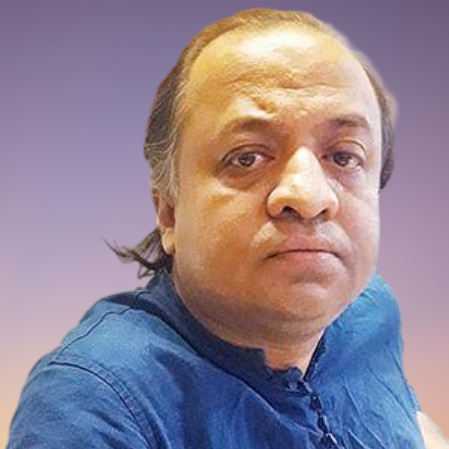





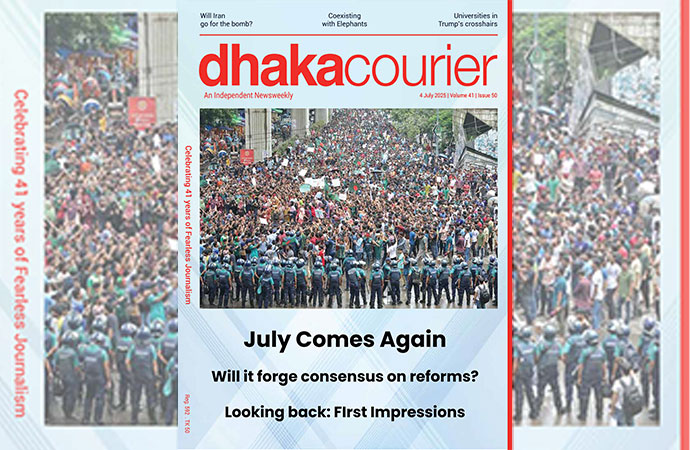
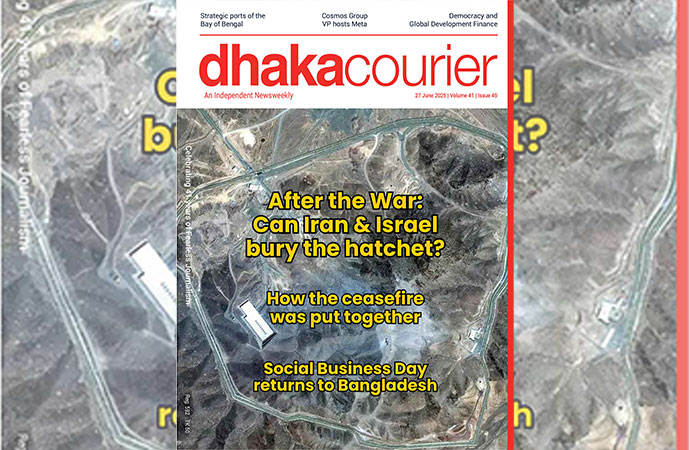
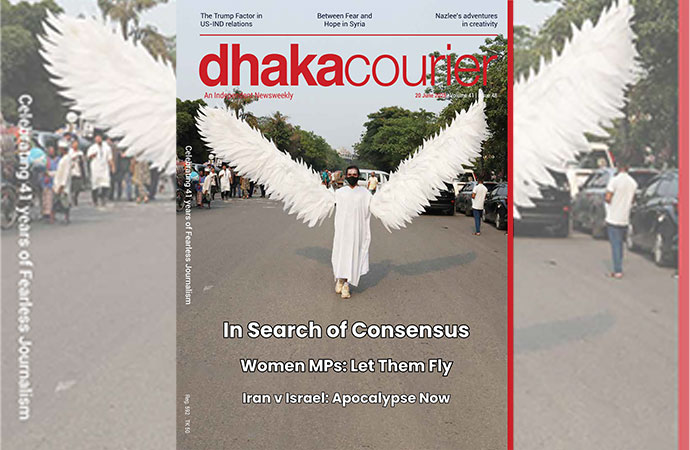


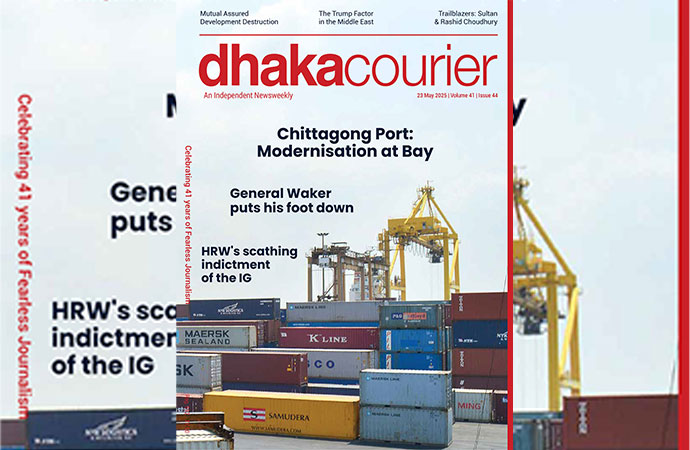
Leave a Comment
Recent Posts
‘Married to Journalism’: Adieu ...
The journalist community of the country united this week in bidding go ...
Reimagining the OST: ‘Utshob’ ...
One of the most successful Bangladeshi films in recent years, 'Uts ...
Harrowing stories of rescue emerge from Texas floods ..
The Resilience of World Trade
Heeding the Lessons of India’s “Emergency”
Sunamganj’s age-old boat market struggles as monsoon ..